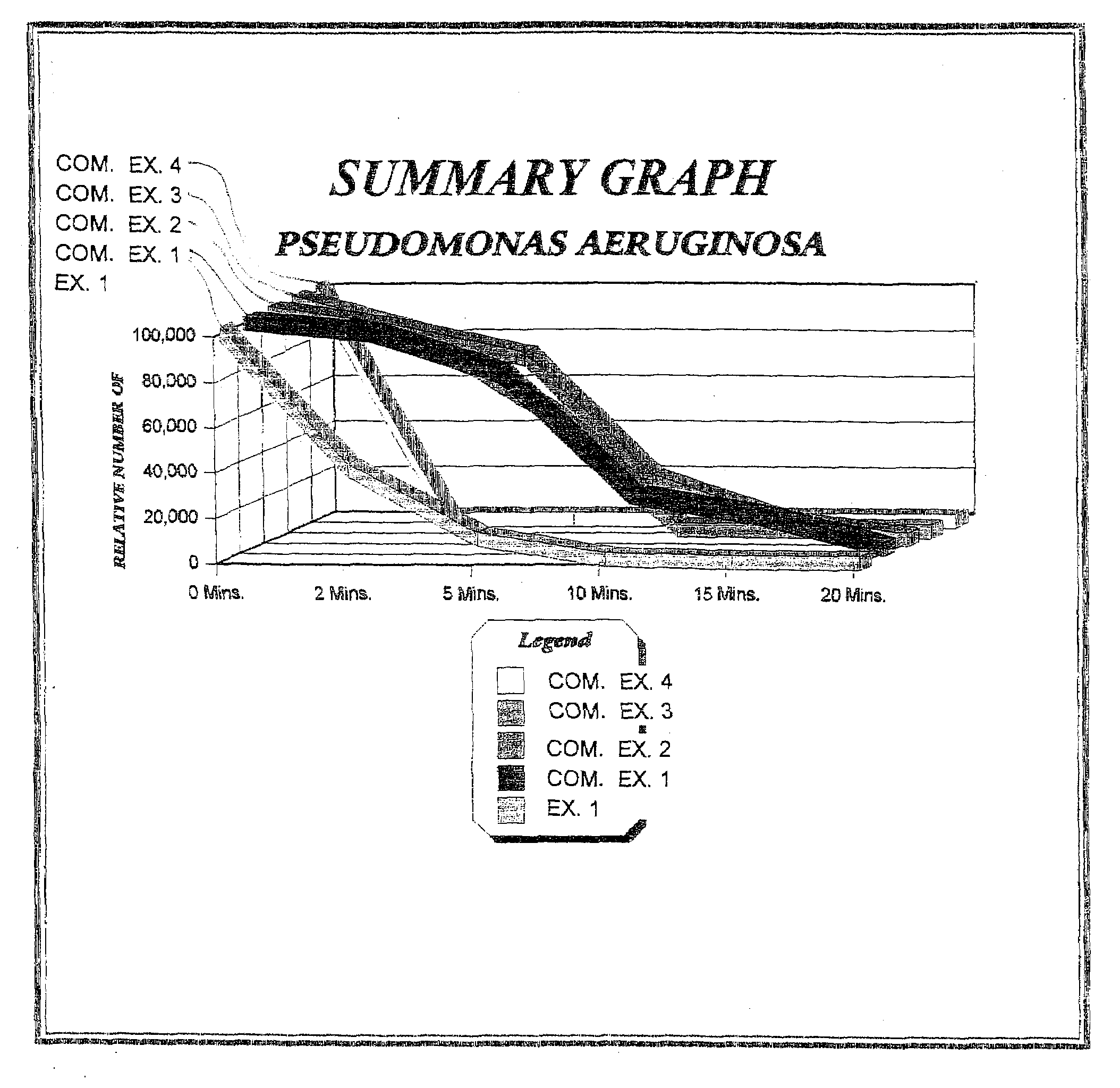Antimicrobial compositions and method
- Summary
- Abstract
- Description
- Claims
- Application Information
AI Technical Summary
Benefits of technology
Problems solved by technology
Method used
Image
Examples
example 1
[0043]The ingredients of the composition of Example 1 comprise in admixture:[0044](a) Lauryldimethylbetaine, 0.84% by weight,[0045](b) Myristyldimethylbetaine, 0.36% by weight,[0046](c) Cetyldimethyl amine oxide, 1.20% by weight, and[0047](d) citric acid in an amount sufficient to adjust the pH of the overall composition to about 4.85.
[0048]The betaine and amine oxide active ingredients of the composition may be combined at room temperature with mixing. The acid may be combined with the foregoing ingredients or subsequently combined together with distilled water.
example 2
[0096]The ingredients of the composition of Example 2 comprise in admixture:[0097](a) Lauryldimethylbetaine, 1.95 parts by weight,[0098](b) Myristyldimethylbetaine, 1.05 parts by weight,[0099](c) Cetyldimethyl amine oxide, 3.00 parts by weight, and[0100](d) citric acid in an amount sufficient to adjust the pH of the overall composition to about 4.85.
[0101]The betaine and amine oxide active ingredients of the composition may be combined at room temperature with mixing. The acid may be combined with the foregoing ingredients or subsequently combined together with distilled water. The resulting composition contains 5.00% active ingredients based on the weight of the betaine and amine oxide components, and for purposes herein, it is considered to be a 1:5 dilution used to make further dilutions as reported below.
example 3
[0102]The composition of Example 2 was further diluted using distilled water to provide a 1:10 dilution to prepare Example 3. Example 3 has a concentration of active ingredients, the total betaine and amine oxide components, equal to 2.50% by weight.
PUM
 Login to View More
Login to View More Abstract
Description
Claims
Application Information
 Login to View More
Login to View More - R&D
- Intellectual Property
- Life Sciences
- Materials
- Tech Scout
- Unparalleled Data Quality
- Higher Quality Content
- 60% Fewer Hallucinations
Browse by: Latest US Patents, China's latest patents, Technical Efficacy Thesaurus, Application Domain, Technology Topic, Popular Technical Reports.
© 2025 PatSnap. All rights reserved.Legal|Privacy policy|Modern Slavery Act Transparency Statement|Sitemap|About US| Contact US: help@patsnap.com



